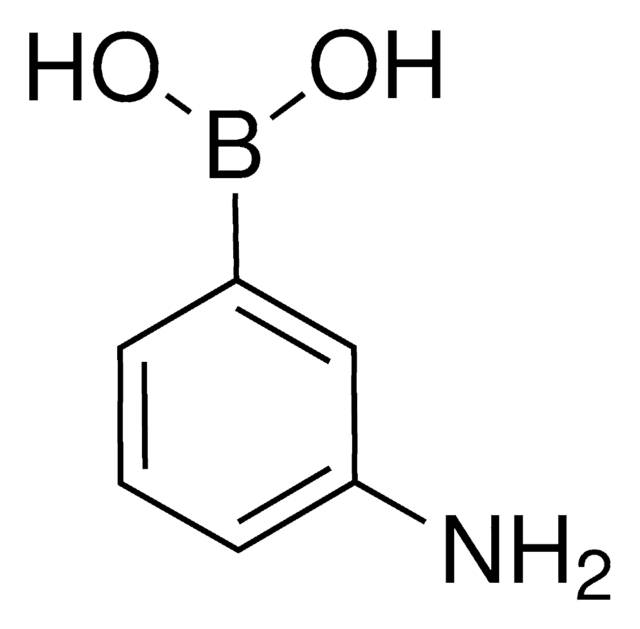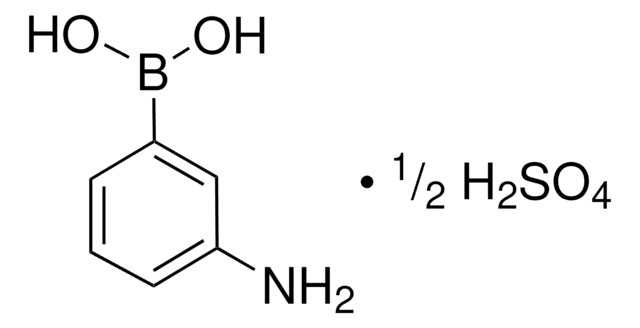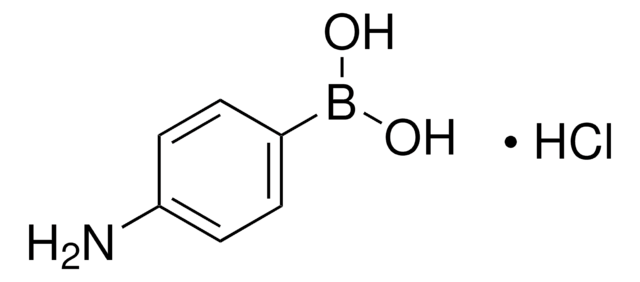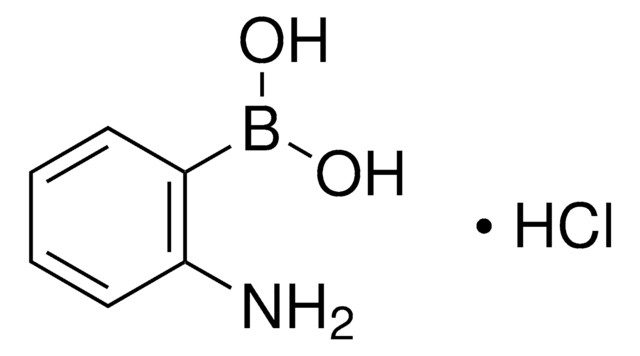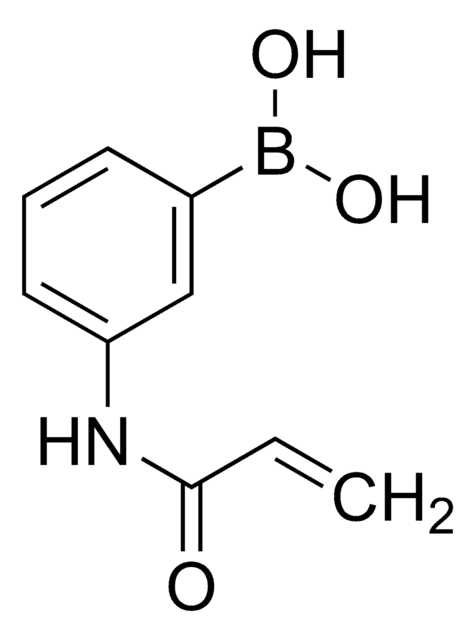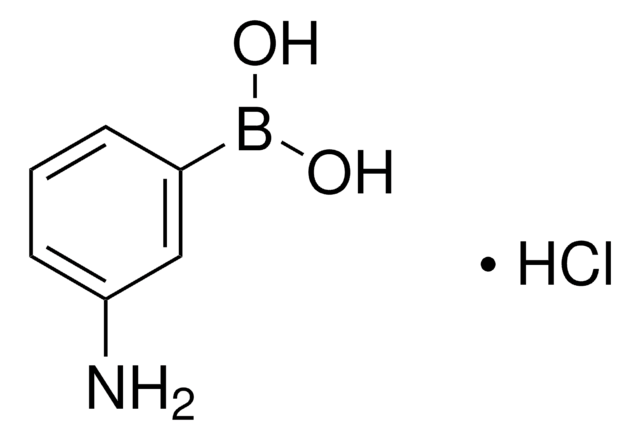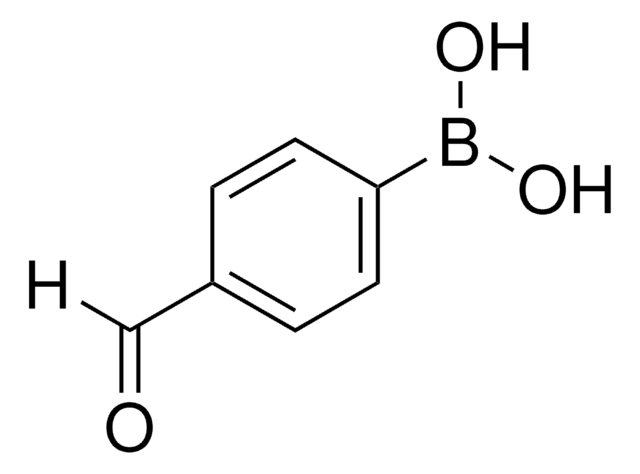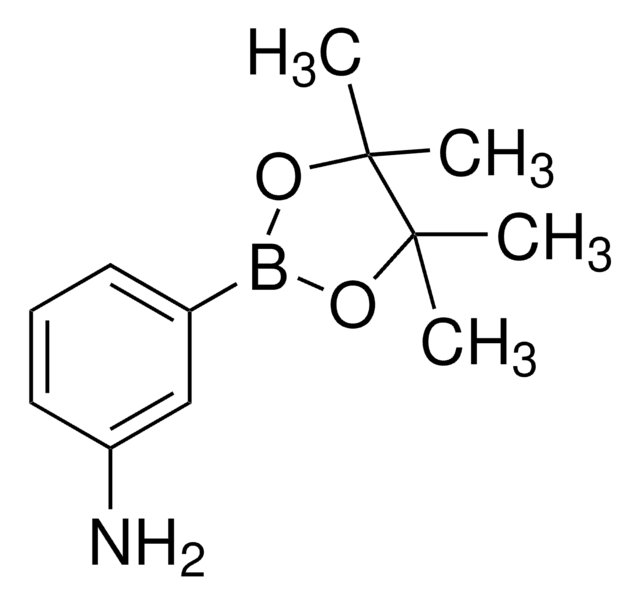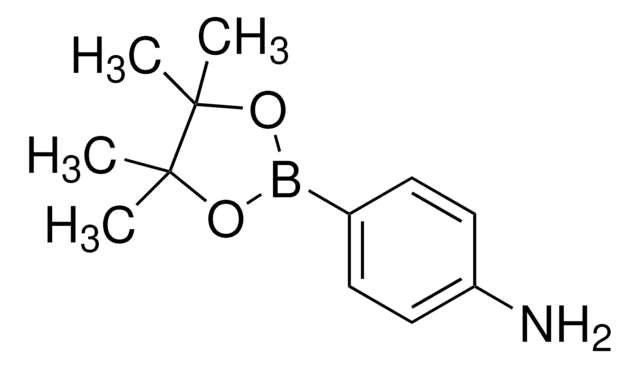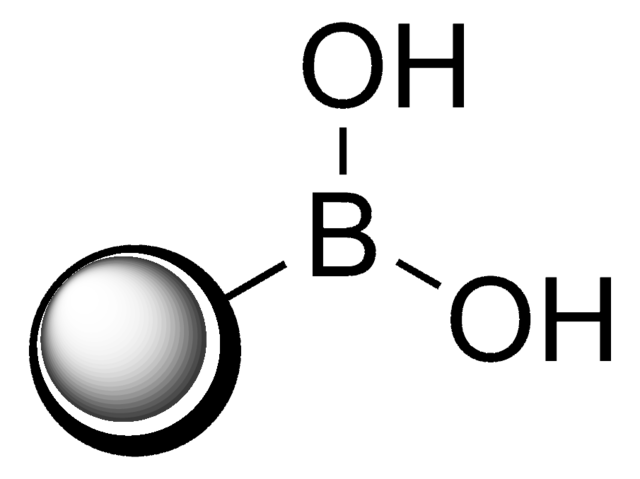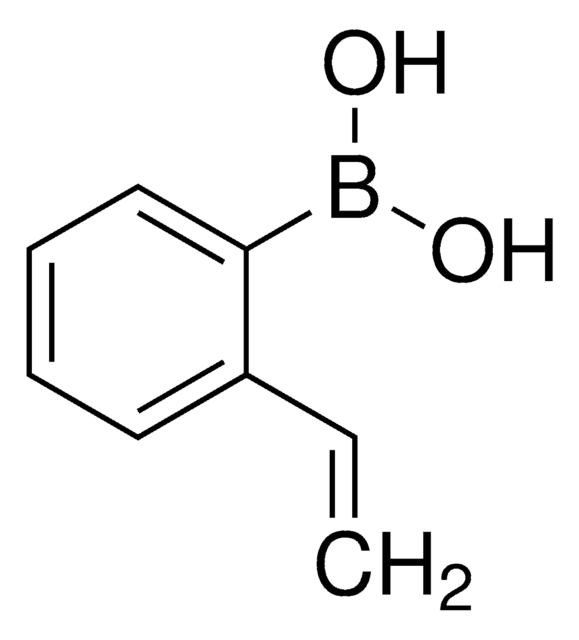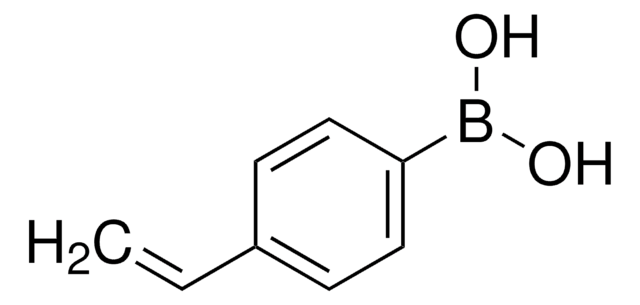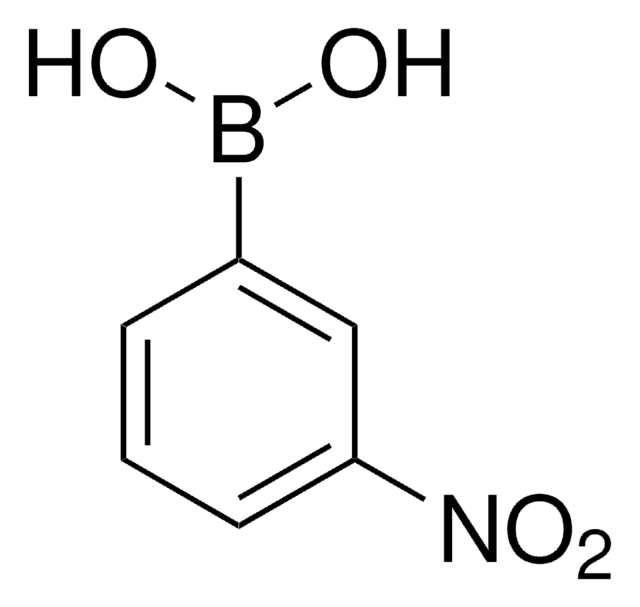287512
3-Aminophenylboronic acid monohydrate
98%
Sinônimo(s):
3-Aminobenzeneboronic acid
Faça loginpara ver os preços organizacionais e de contrato
About This Item
Fórmula linear:
H2NC6H4B(OH)2 · H2O
Número CAS:
Peso molecular:
154.96
Beilstein:
2936342
Número MDL:
Código UNSPSC:
12352103
ID de substância PubChem:
NACRES:
NA.22
Produtos recomendados
Nível de qualidade
Ensaio
98%
Formulário
solid
pf
93-96 °C (lit.)
cadeia de caracteres SMILES
[H]O[H].Nc1cccc(c1)B(O)O
InChI
1S/C6H8BNO2.H2O/c8-6-3-1-2-5(4-6)7(9)10;/h1-4,9-10H,8H2;1H2
chave InChI
XAEOVQODHLLNKX-UHFFFAOYSA-N
Procurando produtos similares? Visita Guia de comparação de produtos
Categorias relacionadas
Aplicação
Reagent used for
Reagent used for Preparation of
- Suzuki-Miyaura cross-coupling
Reagent used for Preparation of
- Gram-positive antivirulence drugs and inhibitors of Streptococcus agalactiae Stk1
- Regioisomer of Zaleplon (a sedative)
- Amphiphilic random glycopolymer, which self-assemble to form nanoparticles, with potential as a glucose-sensitive matrix
- Chemomechanical polymer that expands and contracts in blood plasma with high glucose selectivity
Palavra indicadora
Warning
Frases de perigo
Declarações de precaução
Classificações de perigo
Eye Irrit. 2 - Skin Irrit. 2 - STOT SE 3
Órgãos-alvo
Respiratory system
Código de classe de armazenamento
11 - Combustible Solids
Classe de risco de água (WGK)
WGK 3
Ponto de fulgor (°F)
Not applicable
Ponto de fulgor (°C)
Not applicable
Equipamento de proteção individual
dust mask type N95 (US), Eyeshields, Gloves
Escolha uma das versões mais recentes:
Já possui este produto?
Encontre a documentação dos produtos que você adquiriu recentemente na biblioteca de documentos.
Os clientes também visualizaram
Jing Zhang et al.
Journal of separation science, 40(5), 1107-1114 (2017-01-04)
Novel 3-aminophenylboronic acid functionalized poly(glycidyl methacrylate-co-ethylene dimethacrylate) microspheres were prepared for the solid-phase extraction of glycopeptides/glycoproteins. The adsorption efficiency, maximum adsorption capacity, and specific recognition of the microspheres to glycoprotein were investigated. The results indicated excellent adsorption of glycoproteins by
Gizem Ertürk Bergdahl et al.
Applied biochemistry and biotechnology, 189(2), 374-383 (2019-04-26)
A capacitive sensor was developed to analyze the presence and enzymatic activity of a model protease from standard solutions by following the degradation of the substrate in real time. The enzyme was chosen based on its specific digestion of the
Aishwarya Mahadevan et al.
Biosensors & bioelectronics, 92, 417-424 (2016-11-12)
An improved glycerol biosensor was developed via direct attachment of NAD
Mayalen Oxoby et al.
Bioorganic & medicinal chemistry letters, 20(12), 3486-3490 (2010-06-10)
A structure-activity relationship study from a screening hit and structure-based design strategy has led to the identification of bisarylureas as potent inhibitors of Streptococcus agalactiae Stk1. As this target has been directly linked to bacterial virulence, these inhibitors can be
Xingju Jin et al.
Biomacromolecules, 10(6), 1337-1345 (2009-04-29)
This study is devoted to developing amphiphilic, random glycopolymers based on phenylboronic acid, which self-assemble to form nanoparticles (NPs), as a glucose-sensitive agent. Maleimide-glucosamine was copolymerized with 3-acryl aminophenylboronic acid in methanol at 70 degrees C. Using the nanoprecipitation method
Nossa equipe de cientistas tem experiência em todas as áreas de pesquisa, incluindo Life Sciences, ciência de materiais, síntese química, cromatografia, química analítica e muitas outras.
Entre em contato com a assistência técnica